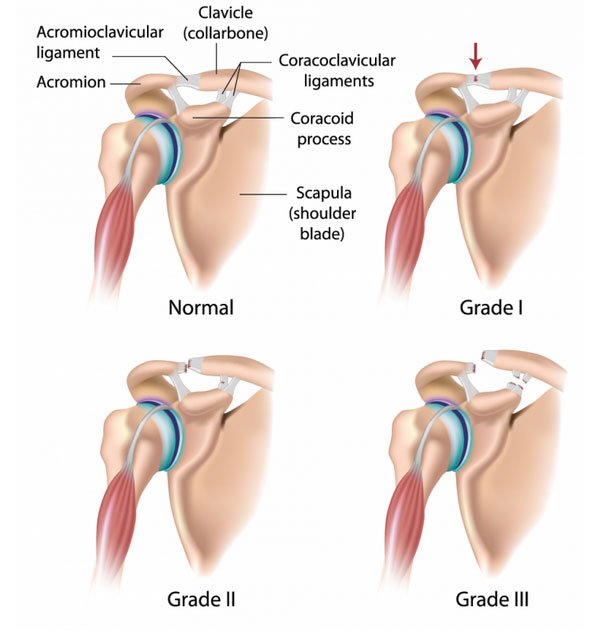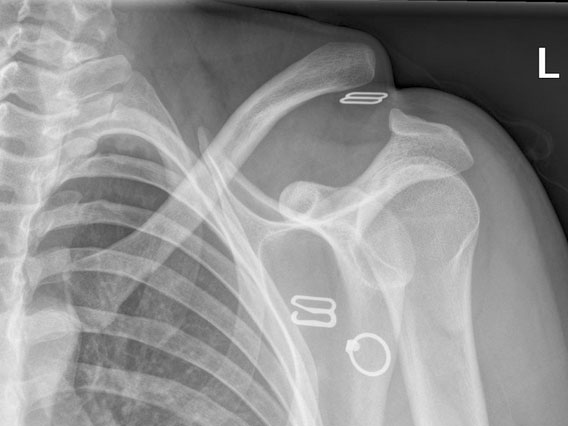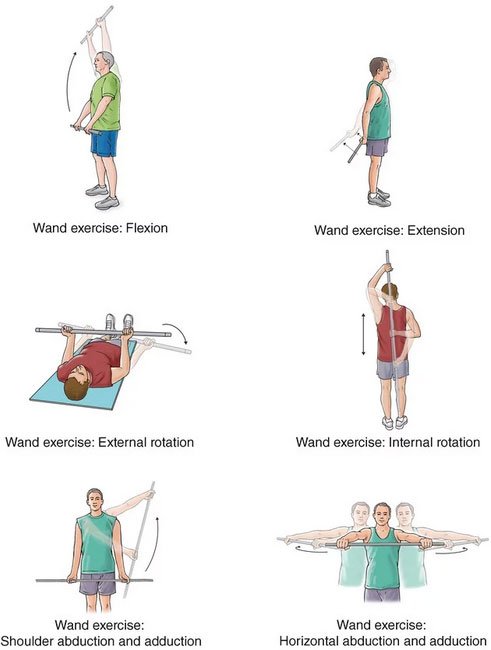What are Acromioclavicular Joint Injuries?
AC Joint injuries are injuries to the Acromioclavicular Joint or where the part of the Scapular (shoulder blade) called the Acromium meets the Clavicle (collar bone).
AC Joint Injuries Mechanism
Acromioclavicular Joint Injury Presentation
Physiotherapists typically talk about the mechanism of injury to assist determine the degree and direction of the forces involved. AC Joint Injuries tend to result from one of two ways:
1. A fall on the Tip Of The Shoulder
2. A fall on to the elbow (thus creating an axial load through the humerus)
When AC Joint injuries are more severe they will present with varying degrees of a step deformity. Do note the uninjured side and some people have naturally prominent AC Joints.
Acromioclavicular Joint Injuries Pain Location
In a study used to characterize the patterns of pain caused by selective irritation of the acromioclavicular joint and of the subacromial space.
Hypertonic saline solution was injected 15 times into the acromioclavicular joints of 10 healthy volunteers.
Irritation of the acromioclavicular joint produced pain directly over the joint, in the antero-lateral neck, in the trapezius-supraspinatus region, and in the anterolateral deltoid.
The pattern of pain produced by irritation of the acromioclavicular joint and subacromial space.
Acromioclavicular Joint Injuries Grading
AC joint injuries - separated shoulder - are graded in three levels
Grade One Injury involves stretching of the Acromio-Clavicular Ligaments (at the tip of the shoulder).
Grade Two involves a tear of the Acromio-Clavicular Ligaments and stretching of the Coraco-Clavicular Ligaments.
Grade Three is described as a tearing of both ligaments
The pattern of pain produced by irritation of the acromioclavicular joint and subacromial space.

The Grading of Acromioclavicular Joint Injuries
Tests to indicate Acromioclavicular Injuries
AC Shear Test
O'Briens Test
Compression Test
Cross Body Adduction Test
Piano Key Test
Resisted Horizontal Extension Test

Xray indicating AC Joint Injury
Acromioclavicular Injury Management
The management of AC lesions is based on minimal intervention, either surgical or non-surgical, aiming to restore both vertical and horizontal stability.

Basic AC Joint Injury Exercises


